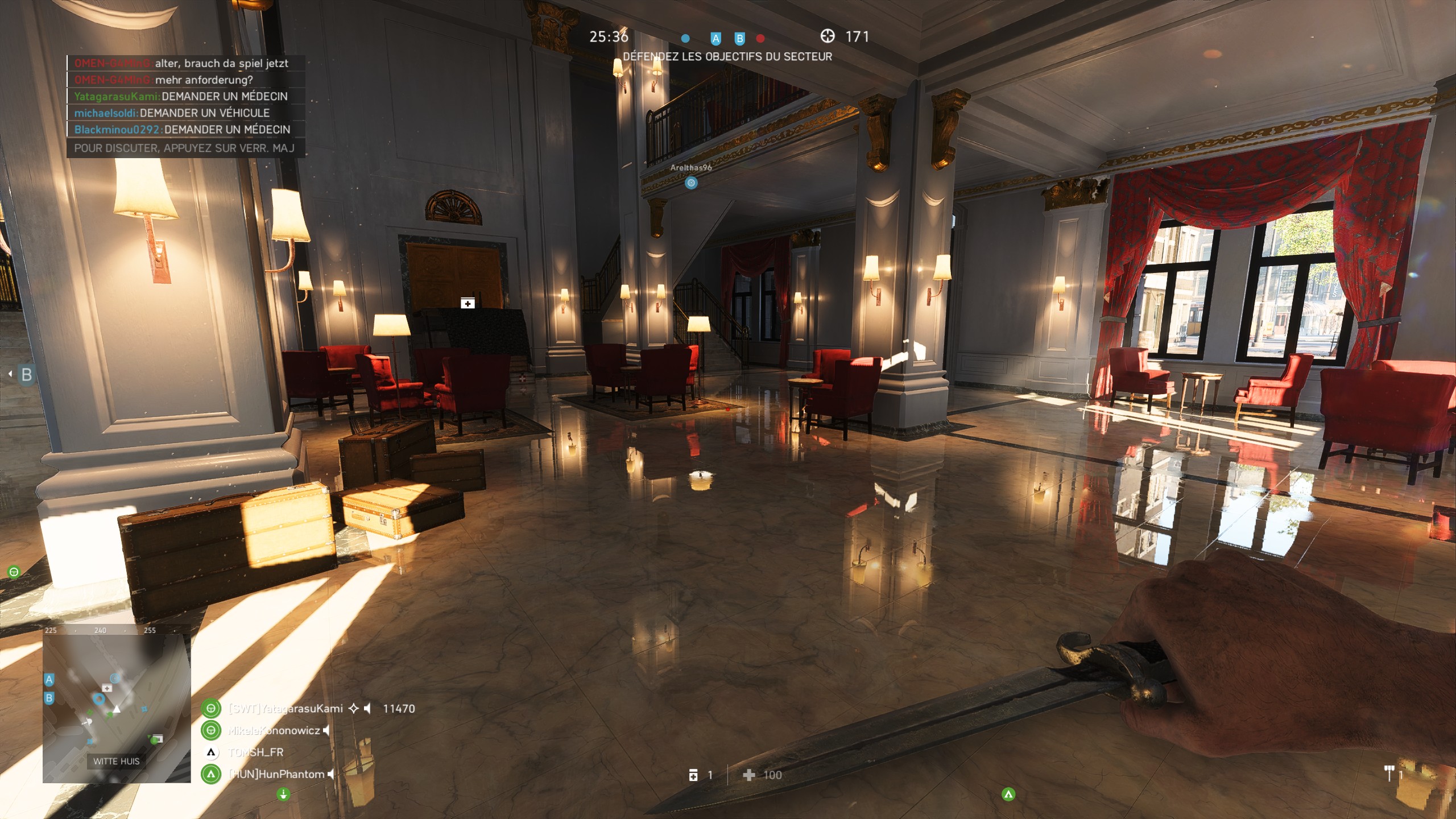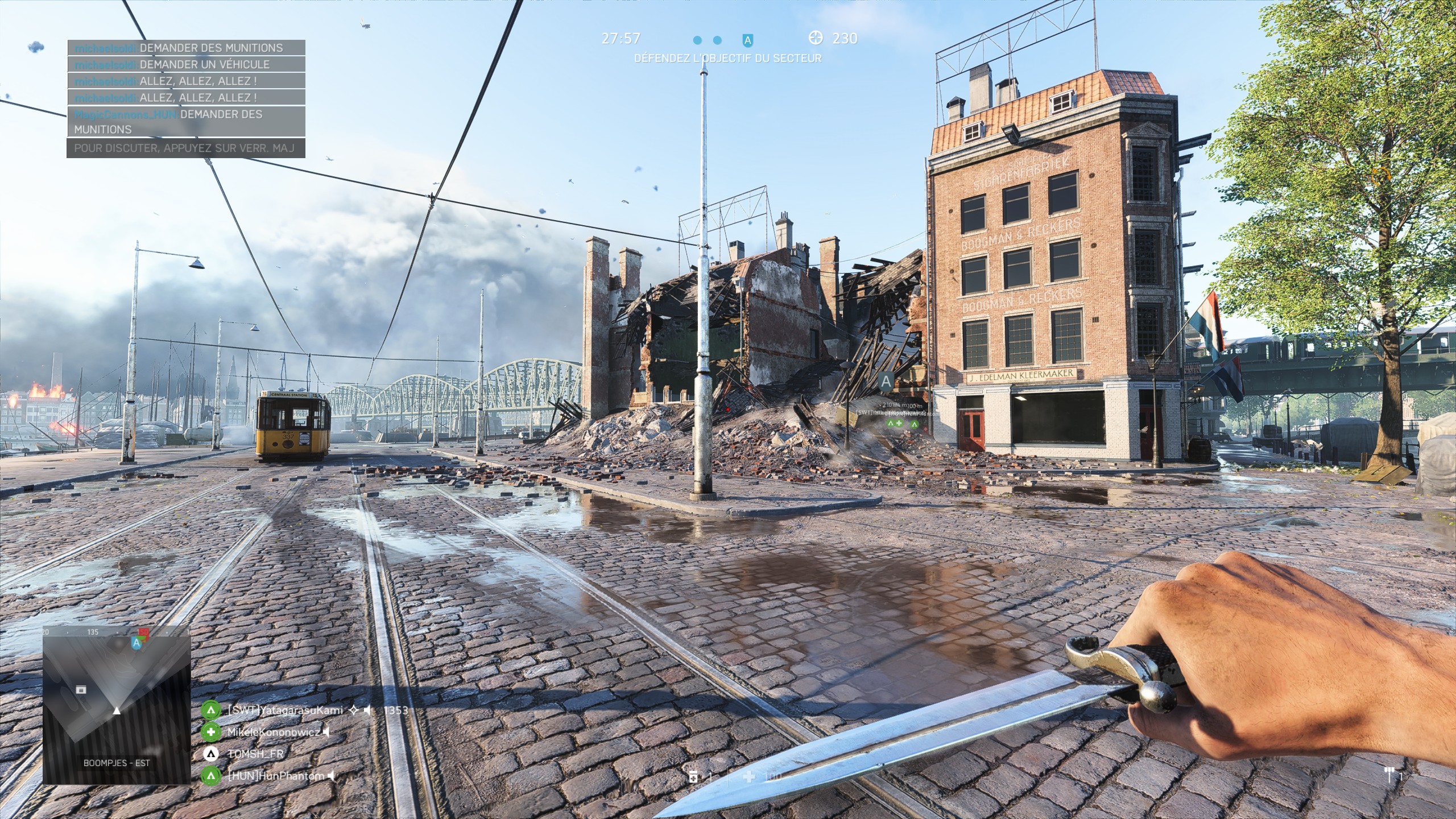If you're wondering why we're only now bringing this article to Battlefield V, be reassured – I didn't like the whole hickhack about patches and drivers personally. Especially since the almost completed first article actually became a waste overnight, just because the patch was in the house. So it was time again to get everything back to zero and again eyes to and through. I cannot change it either, so I am glad that the cooperation with his French colleague Yannick Guerrini is working so well.
With the aforementioned large patch, which appeared a few weeks after launch and the appropriate, current drivers, Battlefield V is finally the first game to really benefit from the ray tracing technology of the new GeForce RTX cards, at least until the introduction DXR-compatible drivers and products from other manufacturers.

DICE relies on the Frostbite 3 engine and a multi-platform solution (Windows PC, PS4 and Xbox One) in the game, and in the end the game is nothing different than Nvidia's large and colorful RTX showcase. And at the moment, the only one. Ray tracing is one of the new focal points introduced by the Turing architecture together with DLSS (which will also be implemented later in Battlefield V).
Our benchmark sequence
As you know, Battlefield V does not have an integrated benchmark, so we had to find a suitable sequence to sufficiently include the ray tracing function. After several attempts with exclusive maps from the multi-player, we took a sequence from the single player mode because of the better reproducibility. We are counting on the beginning of the battle history. Graphically heavy, this sequence is also rich in ray tracing effects with a lot of reflective surfaces. The sequence shows our video:
It is possible to select a variety of graphical options in Battlefield V, but let's focus on the settings for ray tracing. There are four quality levels available: Low, Normal, High and Ultra. The difference between these quality settings is, for example, in the roughness of the materials affected by the beam tracking and the maximum number of rays in a scene. For example, ray tracing in Low and Normal only affects materials with a "softness" index greater than or equal to 0.9, while in High and Ultra, ray tracing also affects materials with an index of 0.5.
As far as the number of rays is concerned, the low to ultra settings define a maximum number of rays equal to 15%, 23.3%, 31.6% and 40% of the number of pixels displayed. But beware, this is only a maximum and by no means a static value. In other words, a scene can have the same (low) beam count, regardless of the setting you choose, if the number of reflective materials is also low. We will see later that the most important parameter seems to be the index of softness of textures and not the maximum number of rays.
Visually, the differences lie in the details (support of the light sources, the railing, some walls and facades), but also in the entire "atmosphere" of the scene, which can appear more or less bright depending on the environment. A higher number of rays also seems to exert an additional antialiasing effect, especially in the shade.
Battlefield V (PC)
 | lagernd | 13,00 €*Stand: 23.04.24 12:30 |
 | Lieferzeit 5-6 Werktage | 13,94 €*Stand: 22.04.24 09:40 |
 | Lieferzeit 4-5 Werktage | 13,95 €*Stand: 22.04.24 14:00 |
Minimum and recommended configurations
The next table shows the minimum and recommended configurations for playing Battlefield V as EA sees and publishes them. It should be noted, however, that the minimum and recommended configurations for using ray tracing are a bit more CPU- and RAM-intensive in the end, not to mention the need to use a DXR-compatible graphics processor.
| Configuration | Minimum | Minimum (DXR) | Recommended | Recommended (DXR) |
|---|---|---|---|---|
| Cpu | AMD FX-8350 Intel Core i5 6600K |
AMD Ryzen 5 2600 Intel Core i5 8400 |
AMD Ryzen 3 1300X Intel Core i7 4790 |
AMD Ryzen 7 2700 Intel Core i7 8700 |
| Ram | 8 GB | 12 GB | 12 GB | 16 GB |
| Graphics card | NVIDIA GeForce GTX 1050 or GeForce GTX 660 2GAMD Radeon RX 560 or Radeon HD 7850 2G |
NVIDIA GeForce RTX 2070 | GeForce GTX 1060 6GB
AMD RX 580 8GB |
NVIDIA GeForce RTX 2080 |
| Windows and DirectX | Windows 7, 8.1, 10 (64 bit) DirectX 11 |
Windows 10 1809 (64 bit) DirectX 12 |
Windows 10 (64 bit) DirectX 11.1 |
Windows 10 1809 (64 bit) DirectX 12 |
| Space on disk | 50 GB | 50 GB | 50 GB | 50 GB |
Test
In order to avoid all bottle necks outside the graphics card world as much as possible, this time we decided on a high-end configuration based on the Core i9-9900K processor. In addition, the processor was overclocked to 5 GHz on all cores and the TDP was set to 175 watts with no time limit to guarantee a certain power reserve. In this way, the RTX 2080 Ti can also unfold completely without being constrained by the CPU.
- Intel Core i9-9900K
- Alphacool Eisbaer 280 AiO
- SuperMicro C9Z390-PGW
- G.Skill Sniper X DDR4-3400 CL16
- PNY SSD CS900 480 GB
- Corsair HX750 PSU
- Windows 10 (1903, all updates), GeForce 417.54 Beta
Until now, graphics cards that support ray tracing via the DXR API of Windows 10 can unfortunately only be counted with the fingers of a single hand. That's why we selected the four NVIDIA models that are relevant for this test alone, namely the GeForce RTX 2080 Ti, RTX 2080 Ti, RTX 2080, RTX 2070 and RTX 2060. Who is surprised?









































Kommentieren